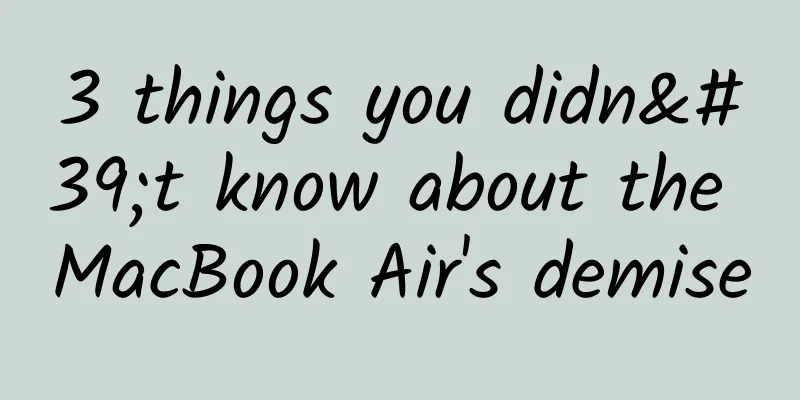If the notch full screen is destined to disappear, will Apple still insist on Face ID?

|
Statistics from both Apple and third-party research institutions have proven that iPhone X has been the world's best-selling smartphone since its launch, and at least the best-selling smartphone in the world from its launch to the first quarter of 2018. Despite this, iPhone X still faces a lot of criticism. If you look at the comments on social media and community forums, the vast majority of iPhone users have expressed their views that they "dislike" and "really hate" the notch screen. Of course, although many manufacturers have publicly ridiculed the design of iPhone X, they still copied the iPhone X's "bangs" design, explaining that it is difficult to avoid notches and gaps in the pursuit of a larger screen-to-body ratio. However, some independent manufacturers choose not to follow suit, such as the NEX new flagship launched by domestic mobile phone manufacturer vivo some time ago, which adopts a "zero-border full-screen" design. As shown in the figure below, vivo NEX has achieved a full screen without bangs on the front, and thanks to the ultra-narrow frame design, the width of the upper frame is 2.16mm, the left and right frames are 1.71mm, and the lower frame is only 5.08mm, breaking the industry record with a 91.24% screen-to-body ratio. In order to achieve a full screen without bangs, vivo has provided many solutions on NEX. Among them, the earpiece is solved by using "full-screen sound technology", and the light sensor is hidden under the screen through compensation algorithm, realizing "under-screen photosensitivity" and "micro-slit infrared". In addition to the earpiece and sensor components, the most difficult problem is the front camera, and vivo uses a "lifting front camera" solution. It is said that vivo has developed a transmission system to work with it, with an extremely precise micro-stepping motor built in, with an independent driver IC and a precise control algorithm to control the lifting stroke. The official said that it can be lifted and lowered 50,000 times without failure, and is resistant to falling and shock and is not afraid of breaking. As for biometric security authentication, vivo uses two currently feasible solutions: back fingerprint and screen fingerprint. On the surface, although vivo's solution cannot be said to be the best solution, it does solve the problem of where to place the front camera of a full-screen mobile phone. The disadvantage is that the "traditional system" takes up a lot of internal space. As for vivo's claim of "anti-drop, shock-resistant and not afraid of breaking", it remains to be confirmed by time. Back to the topic of the iPhone's full screen, as everyone knows, the iPhone X has such a big notch only because the facial recognition technology of Face ID requires a lot of sensors, especially the TrueDepth camera, and also has to take care of the earpiece and the front camera. This is definitely a temporary solution at this stage, because Apple said that they have always wanted to create an iPhone that is all screen on the front, which is more immersive, so that people will not feel its existence at all during use. Now the question is, the notch in Apple's plan is destined to disappear in the future, so what solution will Apple adopt? Will it still stick to Face ID? At present, Apple has obviously decided on the Face ID solution very early, at least since the acquisition of PrimeSense and FaceShift five years ago. It is impossible that Apple has not thought of other solutions to the problem of no bangs on the front. However, hiding the front camera is not the whole of a true full screen. Apple is more concerned about security technology based on biometrics. Many people may ask, why doesn't Apple use screen fingerprints? First, last year, there was news that Authentec, the fingerprint solution supplier acquired by Apple, also had a screen fingerprint solution, but it was not considered in the short term because it was difficult to meet Apple's annual production capacity requirements of hundreds of millions of shipments. Furthermore, the current technical level of the screen fingerprint solution can only be recognized in specific areas, rather than in any area of the entire screen, and the recognition rate is still far behind the maturity of the key fingerprint. The key is that the screen fingerprint that can only be recognized in a specific area does not match the experience of Apple's claim that "it will not make people feel its presence at all." According to what the Apple development team said at the end of last year, it was once again emphasized that the iPhone X was determined to consider the face recognition solution during its development, and the official said that no time was spent on fingerprint recognition, including whether to provide fingerprint recognition on the back, sides or screen glass of the iPhone X. Apple believes that too many solutions will interfere with Apple's development and affect the development of the 3D face recognition function. This means that although Apple may provide mobile phones with screen fingerprint recognition solutions in the future, Face ID is still the best solution at present, and there is no possibility of other solutions in the short term. Apple claims that Face ID is a new method that is safer and more reliable than Touch ID fingerprint recognition technology, and this powerful and secure verification system is even more convenient to use than Touch ID. It is more secure because the probability of a stranger unlocking your iPhone with a fingerprint is 1/50,000, but Face ID reduces this number to 1/1,000,000. It is more powerful because it uses a neural network engine that can perform up to 600 billion operations per second and can quickly adjust the appearance of facial recognition through machine learning, even if the face is wearing makeup, removing makeup, wearing glasses, hats, or growing a beard. Apple believes that the key to Face ID is still more convenient, because the best technology is to bring you convenience while not letting you feel its presence. Apple claims that as long as your eyes and mouth are within the field of view of Face ID, it is a matching distance. It supports many angles, various extreme angles, such as if you put the phone flat on your thighs, or lie on the bed in a non-vertical direction, as long as your eyes and mouth are within its field of view, it can also unlock. Basically, this is the most natural interaction. In other words, the most likely answer to the question has already appeared: even if Apple removes the notch to achieve a true full screen, Face ID is still the best solution. However, how to completely eliminate the notch is a question that Apple needs to spend more time thinking about, because Face ID technology is complex. The TrueDepth camera system not only has an infrared camera, but also a floodlight sensor and a dot projector, not to mention the front camera, earpiece and other sensors. Of course, nothing is absolute, and there are exceptions to everything. New technologies replacing old ones is an unchanging law in the technology industry. However, at least for now, both 3D facial recognition and fingerprint recognition have obvious defects on the road to true full-screen. For example, fingerprint and screen fingerprint technology have been difficult to solve for many years, such as the low recognition rate of dirty hands, wet hands, and hand injuries. On the contrary, Face ID has received a lot of positive reviews, because most people believe that the transition from contact to non-contact is essentially an improvement. In short, Apple has created many excellent products, but it is also very good at making people think about what kind of products should appear in the future. Obviously, the iPhone X with "full screen without Home button + Face ID" is just the first step for Apple to realize its vision. So in your opinion, if the future iPhone really achieves a true full screen without bangs, what solutions will it adopt? Will Face ID still be the standard? |
<<: 5G standard released, what is the difference with 4G? Or download 1G movie in 1 second
>>: Apple pushes new test systems such as iOS 11.4.1
Recommend
We found the most beautiful lakes in the world! Some of them can be seen in China
Lakes are peaceful, clear and refreshing. But in ...
7 Linux command line tools you may never have heard of but are extremely useful
[51CTO.com Quick Translation] These commands will...
New hope for the shortage of donor organs! Chinese scientists regenerate human mid-term kidneys in pigs
On September 7, a research team from the Guangzho...
Hackers may use USB to carry out new network attacks
Hackers can use USB devices such as mice, keyboard...
Does eating leftover rice and vegetables cause cancer? Can we still eat them? One article explains
Author | Xue Qingxin, registered nutritionist, re...
How to wake up a sleeping user
In the field of mobile Internet , CAC (Customer A...
Do you rely on "shivering" to keep warm in winter? 5 heater reviews to keep you warm in winter~
Winter in the north: witnessing the first snow vs...
His and Her Feast, Traveling Through 3,400 Years
Produced by: Science Popularization China Author:...
Useful information sharing: Correct use of const, static, extern
Preface This article mainly introduces how to use...
Tesla pushes 8.0 upgrade, automatic assisted driving function is more reliable
Recently, Tesla has begun to push the 8.0 version...
Short video marketing: How to quickly create short Douyin videos that can go viral and bring sales!
In the past 2018, " short video marketing &q...
There is a huge fire pit that has been burning for nearly 50 years. It is difficult to extinguish it.
Nature always brings us incredible surprises. In ...
#Developer Benefits# Baidu MTC launches Galaxy S7 new phone App compatibility test
Baidu Mobile Cloud Testing Center (MTC) has been ...
The United States investigates Tesla cars. Car accident analysis shows that automatic driving has hidden dangers and cannot recognize lights
Tesla is one of the most well-known autonomous dr...
18 knowledge points about content marketing
Content seeding, this word has been on our lips f...









